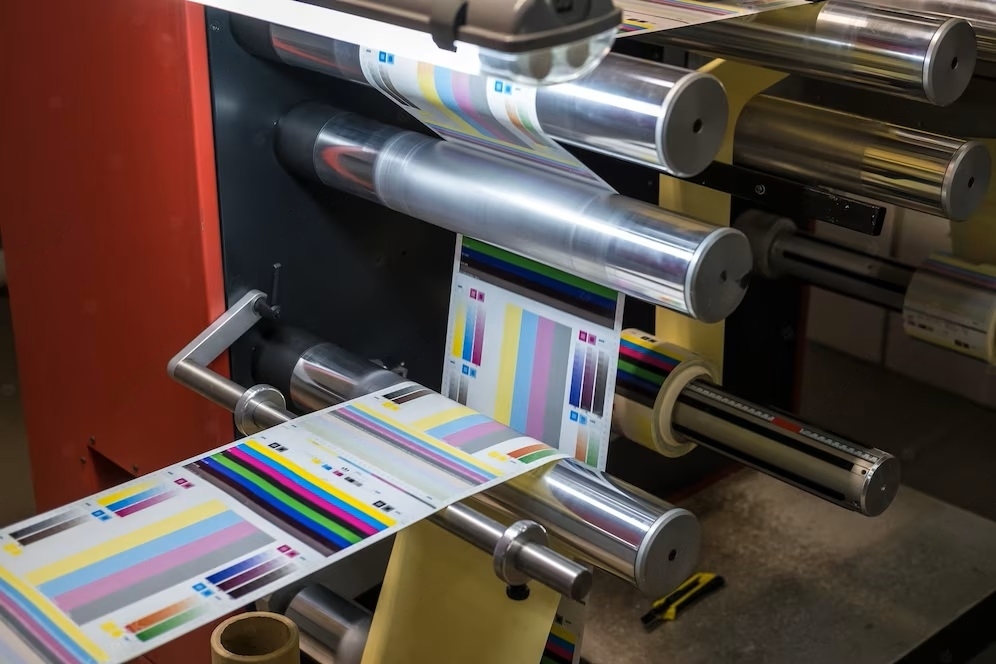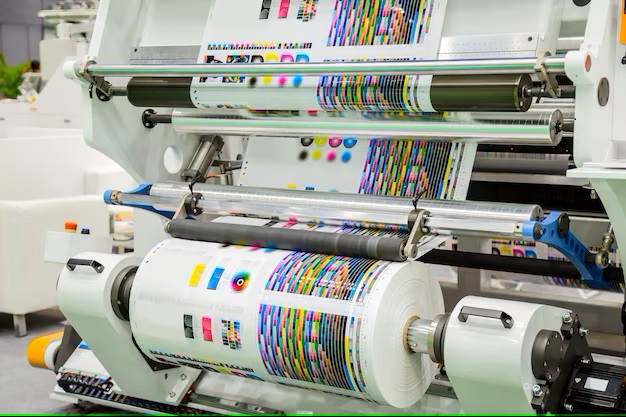Flexible packaging has become increasingly popular in various industries due to its versatility, cost-effectiveness, and sustainability. One crucial aspect of flexible packaging is printing, which plays a significant role in creating eye-catching designs and communicating important product information. In this blog post, we will delve into the different printing methods commonly used for flexible packaging and help you determine which one suits your specific needs. Additionally, we’ll explore the advantages of using Self-Centering Multi Bladder Shaft with a unique internal valve design in the printing industry.
Part 1: Types of Printing for Flexible Packaging
- Flexographic Printing: Flexographic printing is a widely adopted technique for printing on flexible packaging materials. It utilizes flexible relief plates and fast-drying inks. The process involves transferring ink from the printing plate to the substrate, producing vibrant, high-quality prints. Flexographic printing is well-suited for large-volume printing, making it a cost-effective option for many manufacturers.
- Rotogravure Printing: Rotogravure printing involves engraving images onto a cylinder, then coated with ink. Excess ink is wiped off as the cylinder rotates, leaving ink only in the engraved areas. The substrate is pressed against the cylinder, transferring the ink onto the packaging material. Rotogravure printing offers excellent print quality, high-speed production, and the ability to achieve intricate designs.
- Digital Printing: Digital printing has gained significant popularity due to its flexibility and cost-efficiency for short-run production. This method directly transfers digital files onto flexible packaging materials using inkjet or laser technology. Digital printing offers quick turnaround times, customization options, and reduced waste. However, it may have limitations regarding color accuracy and substrate compatibility.
Part 2: Understanding the Self-Centering Multi-Bladder Shaft with Special Internal Valves Design:
The Self-Centering Multi Bladder Shaft is an innovative solution that revolutionizes the printing process for flexible packaging materials. It is designed with special internal valves that enable automatic centering and locking of the shaft, eliminating the need for time-consuming manual adjustments. This feature enhances operational efficiency and reduces setup time, making it an attractive option for businesses aiming to optimize their printing operations.
Advantages of the Self-Centering Multi-Bladder Shaft with Special Internal Valves Design:
- Enhanced Precision and Print Quality: The Self-Centering Multi Bladder Shaft ensures precise tension control, resulting in consistent and accurate print registration. This technology minimizes issues such as misalignment, distortion, and color variations by maintaining optimal tension throughout the printing process. The result is the exceptional print quality that enhances your flexible packaging supplies’ overall appearance and appeal.
- Improved Efficiency and Reduced Downtime: The self-centering capability of this advanced shaft design eliminates the need for manual adjustments and alignment. This significantly reduces setup time, allowing for quicker changeovers between printing jobs. By streamlining the process, businesses can increase productivity, meet tight deadlines, and minimize costly downtime.
- Minimized Material Waste: The precise tension control provided by the Self-Centering Multi Bladder Shaft helps reduce material waste during printing. Uneven tension can cause material slippage, wrinkles, or stretching, leading to excessive waste. This technology maximizes material utilization by maintaining consistent tension, resulting in cost savings and improved sustainability.
- Versatility and Adaptability: The Self-Centering Multi Bladder Shaft can accommodate various flexible packaging materials, including films, foils, laminates, and papers. Its adaptability to different substrates makes it versatile for businesses catering to diverse packaging needs.

Part 3: Choosing the Right Printing Method for Flexible Packaging Supplies
When determining the most suitable printing method for your flexible packaging supplies, consider the following factors:
- Print Quality: Assess the level of detail, color accuracy, and overall print quality required for your packaging designs.
- Production Volume: Consider the volume of packaging materials you need to print. Flexographic and rotogravure printing are ideal for large-scale production, while digital printing is better suited for short runs.
- Cost Considerations: Evaluate the budget allocated for printing and the cost-effectiveness of each printing method.
- Lead Time: Consider the urgency of your packaging requirements. Digital printing offers shorter turnaround times compared to flexographic and rotogravure printing.
Read more Printing Rigid Boxes: Enhancing Your Products with Impeccable Packaging
Conclusion:
Choosing the proper printing method is crucial for achieving visually appealing and informative, flexible packaging. Whether you opt for flexographic, rotogravure, or digital printing, each method offers unique advantages. Additionally, integrating advanced technologies like the Multi Bladder Shaft and Self-Centering Multi Bladder Shaft with unique internal valve design can significantly enhance the efficiency and precision of the printing process. By carefully considering your needs and consulting with printing experts, you can make informed decisions and create ideal flexible packaging supplies that captivate consumers and drive your business forward.
You may also like
-
The Silent Battle Beneath: Understanding the World of Wormfare
-
Unveiling the White CBG Strain: Characteristics, Potency, and Therapeutic Benefits
-
Why Choose Growers Choice Seeds for Buying Marijuana Seeds
-
What type of clothes wear in Qatar Business class?
-
Obtained Review – Get What Your Business Needs to Fuel Expansion

